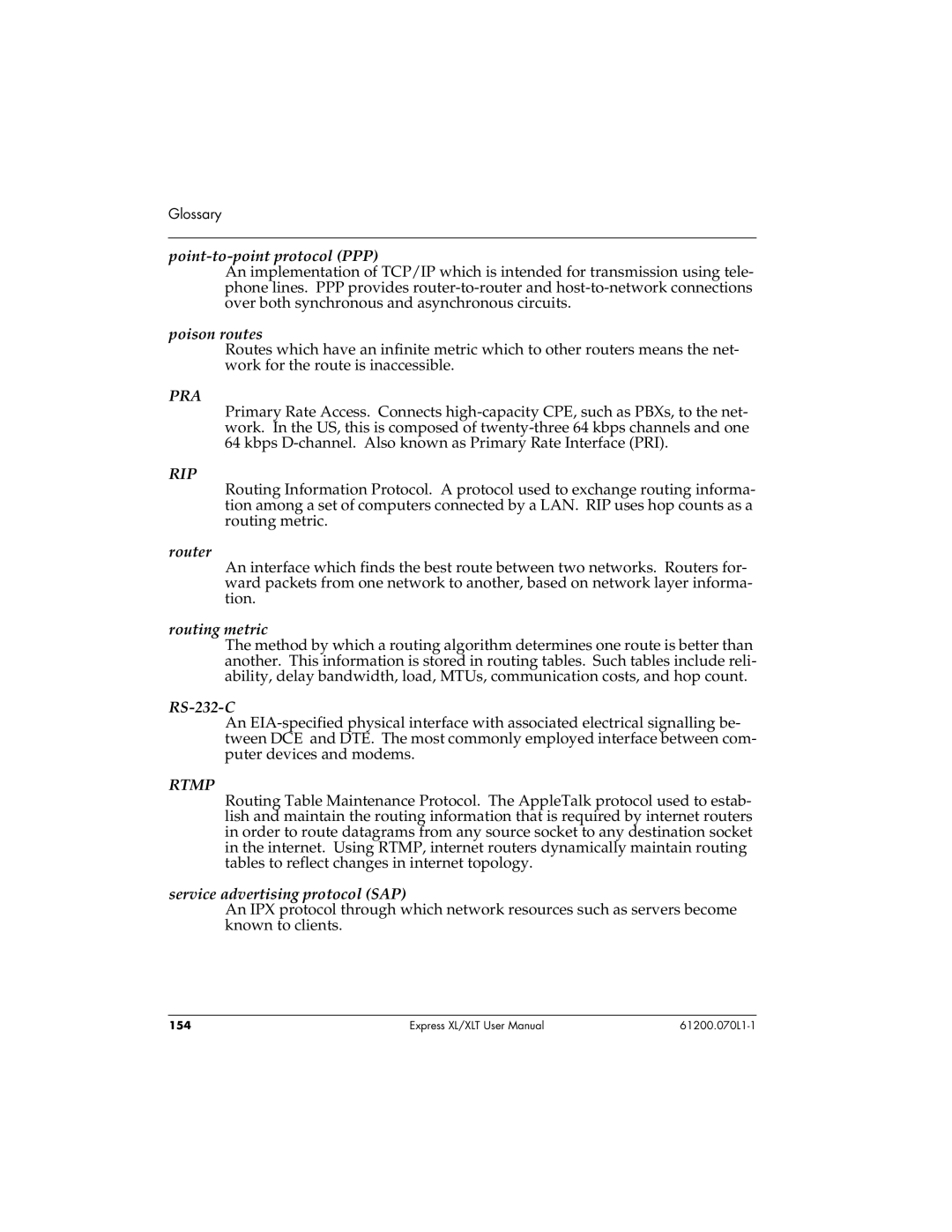
Glossary
point-to-point protocol (PPP)
An implementation of TCP/IP which is intended for transmission using tele- phone lines. PPP provides
poison routes
Routes which have an infinite metric which to other routers means the net- work for the route is inaccessible.
PRA
Primary Rate Access. Connects
RIP
Routing Information Protocol. A protocol used to exchange routing informa- tion among a set of computers connected by a LAN. RIP uses hop counts as a routing metric.
router
An interface which finds the best route between two networks. Routers for- ward packets from one network to another, based on network layer informa- tion.
routing metric
The method by which a routing algorithm determines one route is better than another. This information is stored in routing tables. Such tables include reli- ability, delay bandwidth, load, MTUs, communication costs, and hop count.
RS-232-C
An
RTMP
Routing Table Maintenance Protocol. The AppleTalk protocol used to estab- lish and maintain the routing information that is required by internet routers in order to route datagrams from any source socket to any destination socket in the internet. Using RTMP, internet routers dynamically maintain routing tables to reflect changes in internet topology.
service advertising protocol (SAP)
An IPX protocol through which network resources such as servers become known to clients.
154 | Express XL/XLT User Manual |
